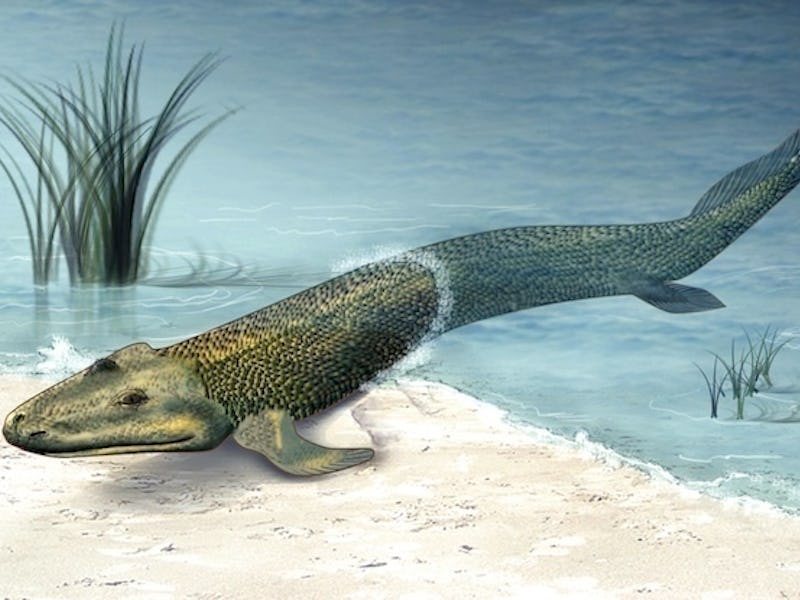Controversial Theory Says Life on Earth Began on Land, Not Sea
Where did the primordial soup start cooking?

Everyone knows water is essential to support life, and most people accept that water is where life originated. Researchers believe that the sea — more specifically, hydrothermal vents in the sea — are where it all started: These vents not only spew out out the chemicals needed to create life but also have energy from heat to power the reactions between those chemicals.
However, not everyone believes that the history of life is water-bound.
In the August issue of Scientific American, University of New South Wales scientists Martin Van Kranendonk, Tara Djokic, and David Deamer wrote an editorial reporting that, during a research trip to the Pilbara region of western Australia, they found evidence that life originated on land.
The Pilbara region of western Australia includes some of the Earth's oldest rock formations.
Their research bolsters the “terrestrial origin of life” hypothesis developed by University of Santa Cruz scientists David Deamer and Bruce Damer in 2016 after their own trip to Pilbara. They introduced their idea in an article in the journal Life, charmingly titled “A Field Trip to the Archaean in Search of Darwin’s Warm Little Pond.”
Researchers from the University of South Wales discovered microbe-like structures called 'palisades' in hot spring deposits
Their hypothesis expounds on the “warm little pond” theory suggested by Charles Darwin in the 1870s, which posited that life began in small pools of water on land rather than in the deep sea. Pilbara, which has been shown to be part of an ancient volcano, is filled with remains of ancient hot springs (warm ponds), making it the perfect place to investigate the origin of terrestrial life.
After their own trip to Pilbara, Van Kranendonk and Djokic published an article in the May issue of the journal Nature Communications, reporting that they had discovered traces of “microbial biosignatures” in those hot spring deposits. In particular, they found stromatolites — ancient rocks built up by communities of microorganisms — with evidence of gas bubbles and microbe-like structures, suggesting that life indeed once existed there. The stromatolites are estimated to be 3.48 billion years old. Previously, the oldest record of life at a land-based hot spring was an estimated 3 billion years.
In an article published in The Conversation, Djokic explained that these biological traces provided “at least a geological perspective of the types of environments available and inhabited by life very early on in Earth’s history.”
Phospholipids can come together and form spherical containers
His explanation for how small pools of water gave rise to life is a biochemical one. He argued that free carbon and nitrogen, collected in the pools of water and got more concentrated as the water evaporated. As the dehydration-hydration cycle repeated, the compounds in the pools slowly formed different molecules that comprise the cells we’re familiar with today. In particular, they contained the ingredients to make phospholipids, cellular building blocks that stick together in sheets and form little spherical shells — perfect for encapsulating other substances — down the line.
Evolutionary biologists call these spheres protocells — essentially cell membranes filled with different molecules (like the cells we’re familiar with), except they’re not alive. In a TedX presentation in 2015, Damer explained that the close proximity of molecules inside the protocells increased the likelihood that chemical reactions would occur between them and with the cell membrane. As the pools of water evaporated and rehydrated, these protocells would form and re-form, picking up other molecules. Eventually, he argues, these random reactions led to increasingly complex molecules like amino acids, DNA, and organelles — and life crawled from land into the sea, rather than the other way around.
UC Santa Cruz researchers argue that the origin of life started from hot springs
The debate is ongoing. Archaean bacteria have been found in both deep sea hydrothermal vents and hot springs on land, and scientists are still a long way off from being able to show which colonies were the first to lead to life. In the future, Deamer plans to explore his unorthodox theory further with a machine that simulates the heat, acidity and the evaporation-rehydrating cycles of the hot springs.